No fish is more grill or smoker friendly than salmon, and this is meant to be a hot smoked salmon recipe, but I have tried it with white fleshed fish and it works just fine.
Long before Europeans set foot in North America, Native Americans and Native Canadians on the Pacific coast practically subsisted on salmon. The flesh is rich in protein, minerals, and fish oil loaded with omega 3 fatty acids, unsaturated fats thought to be beneficial.
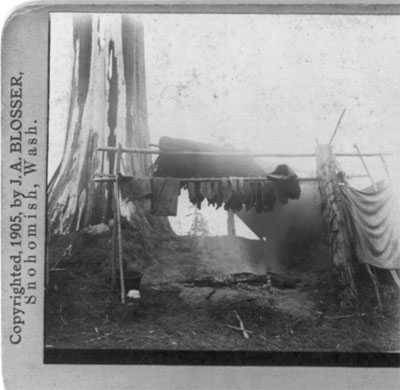
Fish preservation techniques
To preserve their catch in the days before refrigeration they would cut meaty filets from these huge fish, cure them by coating them with salt, and drape the filets over a pole above a smoldering fire. They even built smokehouses with walls of animal hides.
Another popular technique in the Pacific Northwest was to butterfly the fish, attach it to a stake, and jam the stake in the ground around a smoky campfire, gently cooking and smoking them at the same time. Called ponassing, here we see the method still practiced by Tillicum people on Blake Island in Puget Sound where visitors learn of the native Americans of the region and get to eat the salmon. The chefs here season the meat, thread wooden sticks through the fish and a stake, jam the stake into the dirt around glowing hardwood embers, and roast the meat side for about 30 minutes, turn the stake around, and roast the skin side for about 10 minutes. It comes out perfect.
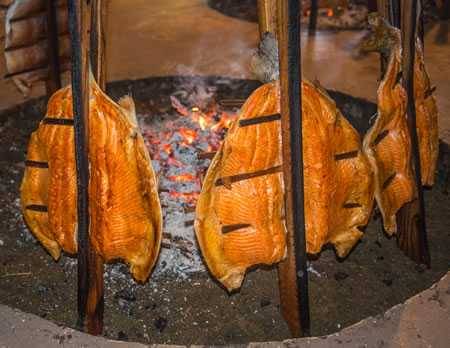
How we do it
My recipe below modernizes the ancient technique. It creates an elegant, delicate, moist piece of meat with a hint of sweet, salt, and garlic. Unlike the stuff we put on bagels, it is “hot smoked” at about 225°F (107°C).
I serve it as an appetizer at room temp on a platter so people can help themselves and flake it on crackers, toast points, rye toast, apple slices, or cheese slices. It keeps well at room temp for a few hours because it is well salted. You can make a heady variation of bagels and lox by serving this on bagel chips with cream cheese and chives. It is also wonderful on top of small boiled potatoes, sliced in half, topped with sour cream, and then the salmon. Try it on a toast point with a dollop of horseradish cream sauce or minced hard boiled egg.
Another wonderful use is to mix it in with scrambled eggs, omelets, or in risotto. It also makes a fine sandwich. Put it in a bowl and flake it with a fork, add a very tiny splash of sesame oil and some mayo. Go easy on mayo. Makes a fine sammie on rye. Another option is to put a sweet glaze on the fish. Because it is both sweet and salty, this variation really shines if served straight on crackers or toast. Or use my pastrami rub instead and make salmon pastrami.
Do not try cold smoking at home
Cold smoked salmon, cooked at low temperatures, makes Nova Scotia Lox, the stuff we love on bagels. But it is tricky to do this properly, either commercially and especially at home, because the fish is cooked at low temps where there is a high risk of pathogenic bacterial growth. In fact, any smoking under 200°F (93°C) is very high risk. You cannot effectively eliminate pathogens, especially heat resistant spores, at these cooler temps, and there is even a risk of parasites like tapeworm.
To properly cold smoke, your fish must be very fresh and carefully inspected by an expert, you must have precise control of the air temp, the meat temp, and use carefully measured salt quantities and curing agents. You must bring the fish up to temp in a specified manner and cool it in a specified manner. One error and someone can die. You can get a sense for how complex this is by reading what the FDA has to say about the subject here or here. I know there are home smoking websites that say cold smoking seafood and meat is easy and fun. Don’t believe them. More on the subject here.
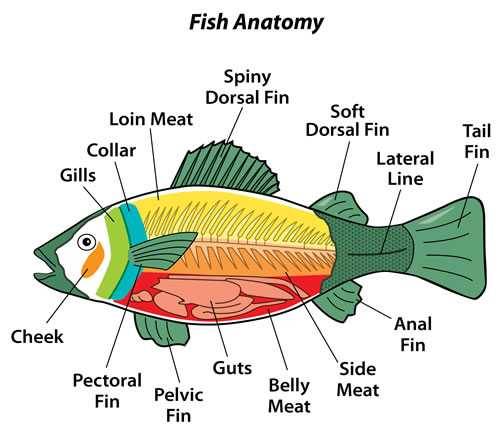
Why do we wet brine this?
If you have read much of this site you will note that I prefer dry brining to wet brining in most cases. This is an exception. Fish absorbs brines and sugar better than land animals, and in a liquid, the salt distributes more evenly in the meat.
Oils get into everything
Fish oils permeate anything. They can get into the scale and greasy drippings built up inside your cooker. It is a good idea to give your smoker a thorough washing after smoking fish. Another technique is, after removing the fish, give ‘er all she’s got Scottie and get the inside rip snorting hot to burn off any of the oil buildup. If you do a lot of fish, it might be worthwhile having a separate smoker just for fish. This is one of the few meats that I think tastes best on an electric smoker since the smoke is less intense. Pellet grills also excel at smoking fish since they, too, produce a delicate flavor.
Hot smoked haddock in Scotland
Hot smoked haddock in Scotland
In Scotland, where smoked whisky rules, there is a culinary affinity from a small town named Arbroath where the hot smoked haddock is trademarked Arbroath Smokie under the European Union’s Protected Geographic Indication laws. The beloved dish has inspired poetry, most notably Christopher MacLachan’s “To a Smokie (2009)”:
For haggis some wad live an’ dee,
For Cullen skink or partan bree,
For Athole brose or kedgeree,
Or hokey-pokey;
Gie me that treasure o’ the sea,
An Arbroath smokie.
The end of ilka month’s first week,
To Doubledykes just see me streak,
The Farmers’ Market there to seek,
An’ in twa blinks,
I’ll hae a haddie at its peak,
Hot-smoked by Spink’s.
First, heidless, gutless fish they wale,
Tied up thegither by the tail,
An’ hing them ower a wooden rail
That then they steek,
To cook them through, frae bane to scale,
In vats o’ reek.
Then frae the smoke the fish are whipped,
An’ each oot on the coonter’s tipped,
Whaur frae the flesh the banes are ripped
By fingers nifty,
Till ane inside my poke is slipped,
For twa pund fifty.
Mony there are wha canna wait,
But pree theirs in the market straight;
I like to set mine on a plate,
Warm frae the grill;
Then royally I dine in state,
An’ eat my fill.
O Smokie, when I see you there,
Your riggs o’ ripened meat laid bare,
An’ scent your fragrance on the air,
I bless them both:
The fisherfolk wha bring sic fare,
An’ thee, Arbroath!
Hot smoked salmon recipe
Makes:
Takes:
Equipment
- 1 clean brown paper bag or a few sheets of unused paper
Ingredients
- 2 pounds fresh skin-on salmon fillets of similar thickness
- ½ cup hot water
- ¼ pound salt, any type (you don't need a scale, I'll explain below)
- ½ gallon cold water
- ¼ cup granulated white sugar
- 2 tablespoons garlic powder (not garlic salt)
- 2 tablespoons finely ground black pepper
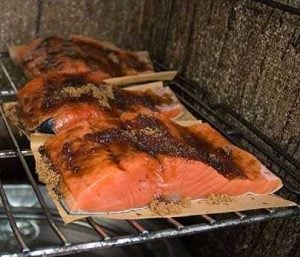
These recipes were created in US Customary measurements and the conversion to metric is being done by calculations. They should be accurate, but it is possible there could be an error. If you find one, please let us know in the comments at the bottom of the page
Method
- Prep the fish. Remove the scales but leave the skin on. Don't worry if there are a few scales left on the skin. You will be removing the skin eventually. Run your fingers over the flesh of the fish and make sure all the pin bones are gone. If not, drape the fish over the edge of a bowl so the bones stick out, and yank them with tweezers or needle nose pliers. Sometimes the lining of the belly of the fish has a milky membrane on it. With a sharp filleting knife, remove it. It will get leathery when you cook. Cut the meat into 8-ounce pieces, each about 3-inches wide.
- Brine it. Chose your brining container carefully. It needs to be food grade, large enough to hold the meat and the brine with the meat submerged, and it cannot be made of aluminum, copper, or cast iron, all of which can react with the salt. Do not use garbage bags or a garbage can or a bucket from Home Depot. They are not food grade. Do not use a styrofoam cooler. It might give the meat an off flavor and you'll never get the cooler clean when you're done. Zipper bags work fine. For large cuts, get Reynolds Brining Bags, Ziploc XL, and XXL bags.
- You can make the brine days in advance and keep it chilled if you wish. Start by adding 1/2 cup (117ml) hot water to a one cup measuring cup. Then pour in salt, any salt, until the water line reaches 3/4 cup (177ml). The water will swallow up almost exactly 1/4 pound regardless of whether you use table salt, kosher salt, pickling salt, or sea salt. The volume of these salts may differ, but their water displacement will be the same! Pour the slurry into your very clean non-reactive brining container that's large enough to hold the meat and a bit more than 1/2 gallon of water. Then add 1/2 gallon (1.9 L) of cold water. Then add the sugar, garlic, and black pepper. Stir until most of the sugar is dissolved. The garlic and pepper will not dissolve much at first.
- If you are using a pan, submerge the fish skin side up in the brine and refrigerate. Make sure the meat part is thoroughly submerged. If you need to, hold it under with a plate with a weight on top. Cover with plastic wrap not aluminum foil. Gently stir the container occasionally to make sure all parts of the fish come into contact with the brine.
- If you brine in a zipper bag, periodically grab the bag and squish things around and flip the meat so the brine can get in from all sides. Place the bag in a pan to catch leaks.
- The brining time will vary depending on how thick the fillets are. Brine 2" (5 cm) thick fillets for about 2 hours in the fridge, 1" (2.5cm) fillets for 1 hour. Drain the fish and discard the brine. Then rinse the fish to remove excess surface salt. Pat dry with paper towels. Some folks like to put the fillets in the fridge for an up to 3 hours so that a shiny tacky film or pellicle will form on the surface. It is said to help retain moisture and smoke. I have tried it with and without pellicle and see no quality difference. But a few hours of resting will help the brine to distribute itself evenly through the flesh.
- Cut pieces of a paper bag or plain white paper about the same size as each piece of fish and place the fish on the paper, skin side down. Don't use foil or parchment paper. We want the fish to stick to the paper to help us remove the skin, and it will not stick to foil or parchment. If you are glazing, sprinkle some brown sugar on top of the fillets or paint them with maple syrup.
- Fire up. Set up your grill in a 2-zone configuration or get the smoker started, and get the indirect zone up to about 225°F (107°C).
- Cook. Place the fish on a rack on your grill or smoker so the pieces are not touching each other. Add the smoking wood if you're using a grill. Start spot checking the meat temps after about 30 minutes. As the meat approaches doneness, droplets of milky liquid will often come to the surface. Some cooks call them boogers, but they are actually a protein liquid called albumin from within the muscle fibers. It just looks gross, but it's OK. You can wipe it off or brush it off with a wet brush if you want. Remove the meat when it is at about 135°F (57°C) internal. No more than 140°F (60°C). Total cooking time will be about 60 minutes depending on the actual temperature of your oven and the thickness of the meat.
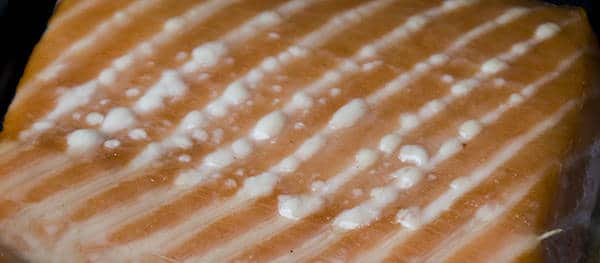
- Cool. Remove the fillets and let them cool for about 15 minutes, until you can handle them. Then peel off the paper and the skins should come right off with it. While you are looking at the skin side, if there is any dark brown flesh, scrape it off with a serrated steak knife and discard it. It can taste muddy.

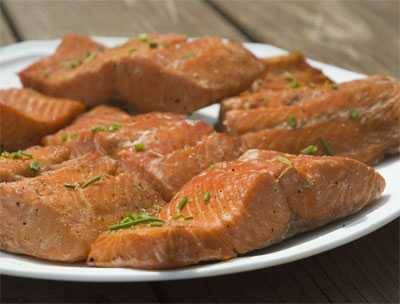


High quality websites are expensive to run. If you help us, we’ll pay you back bigtime with an ad-free experience and a lot of freebies!
Millions come to AmazingRibs.com every month for high quality tested recipes, tips on technique, science, mythbusting, product reviews, and inspiration. But it is expensive to run a website with more than 2,000 pages and we don’t have a big corporate partner to subsidize us.
Our most important source of sustenance is people who join our Pitmaster Club. But please don’t think of it as a donation. Members get MANY great benefits. We block all third-party ads, we give members free ebooks, magazines, interviews, webinars, more recipes, a monthly sweepstakes with prizes worth up to $2,000, discounts on products, and best of all a community of like-minded cooks free of flame wars. Click below to see all the benefits, take a free 30 day trial, and help keep this site alive.
Post comments and questions below
1) Please try the search box at the top of every page before you ask for help.
2) Try to post your question to the appropriate page.
3) Tell us everything we need to know to help such as the type of cooker and thermometer. Dial thermometers are often off by as much as 50°F so if you are not using a good digital thermometer we probably can’t help you with time and temp questions. Please read this article about thermometers.
4) If you are a member of the Pitmaster Club, your comments login is probably different.
5) Posts with links in them may not appear immediately.
Moderators